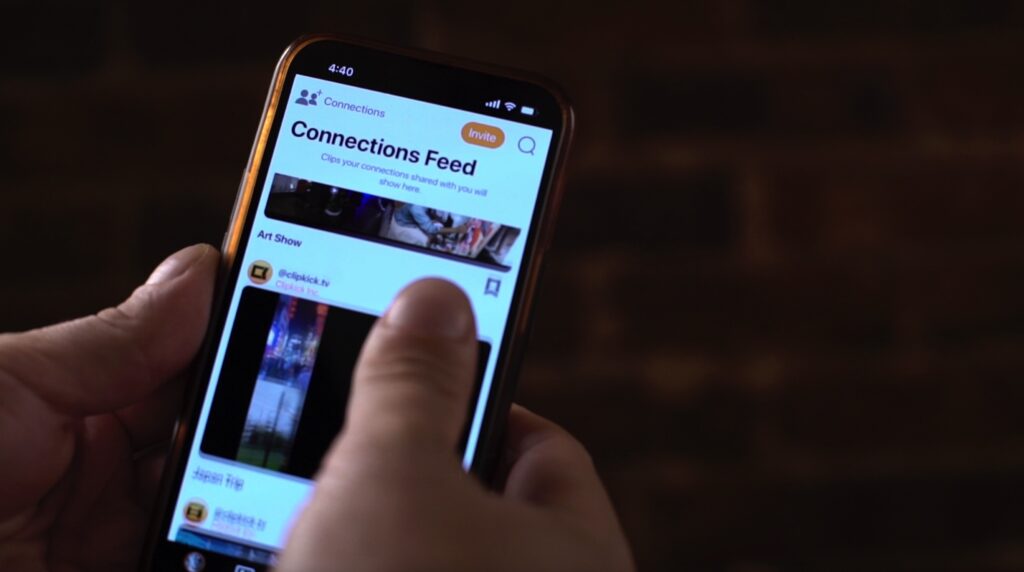In the ever-evolving landscape of digital communication, the shift towards personal media marks a significant turning point. As we navigate through the complexities of digital engagement, privacy concerns, and the monetization of content, the emergence of personal media as a viable alternative to traditional social media is not just timely but necessary. At Clipkick, we are at the forefront of this movement, understanding and shaping how personal media can redefine our interactions and control within the digital space. This article aims to explore the historical evolution, the technological underpinnings, and the future prospects of personal media, emphasizing why platforms like Clipkick are more than just alternatives—they are the next step in the evolution of digital media.
The Landscape of Digital Media
The media landscape has long been dominated by mass media—large corporations controlling large-scale production and distribution of content. However, with the advent of the internet, a new player entered the game: social media. Platforms such as Facebook and Twitter revolutionized how content is created and shared, giving rise to user-generated content. Despite this democratization, these platforms still exert considerable control over content distribution and monetization, essentially retaining an unlimited license to do whatever they like with people’s personal content and data. The public’s realization of the the realities of social media is leading to the rise of personal media. Personal media, by contrast, empowers individuals not just in content creation but also in ownership and distribution, ensuring that interactions remain personal, direct, and private, avoiding many of the pitfalls and negative impact of social media.
Overview of Media Types
Mass media: Corporations create, own, distribute and monetize content.
Social media. People create content. Corporations own, distribute, and monetize content.
Personal media: People create, own, distribute, and monetize content.

Current Challenges with Social Media
Social media platforms have increasingly come under scrutiny for various issues, including breaches of privacy, misuse of user data and content, the proliferation of misleading information and negatively impacting mental health.
The business models of these platforms, based largely on advertising revenue, often compromise user experience and privacy. Moreover, the algorithm-driven nature of these platforms can obscure content, diminishing the creator’s control over their own work and direct engagement with their audience.
Technological Foundations and Evolution of Personal Media
The roots of personal media can be traced back to the simple yet revolutionary technologies of the past, such as fax machines, which enabled direct document sharing. Today, the evolution has been shaped by leaps in technology including high-speed internet, smartphones, streaming technology, and advanced cloud services. These technologies have laid the foundation for platforms that allow users to control how they store, view, share, and manage their content, ensuring that they retain ownership, privacy and control distribution of their media.
Monetization in Social vs. Personal Media
Traditional social media monetizes primarily through advertising, leveraging user data to target content and ads. This often results in a misalignment between user interests and content visibility. Personal media, on the other hand, offers a different approach—direct monetization. Platforms like Clipkick have free versions but also charge subscription fees in addition to allowing creators to earn revenue directly from their audience through subscriptions or direct sales, providing a clearer, more transparent monetization pathway that doesn’t require the massive viewership necessary to make money through advertising.
Clipkick’s Business Model
Unlike platforms that rely on ad revenue, Clipkick allows creators to monetize their content directly through subscriptions, without the need for intrusive ads. This model not only enhances the creator’s earnings but also improves the user experience, freeing it from the clutter and bias of advertising-based revenue models.


Behavioral Shifts Towards Personal Media
The growing dissatisfaction with social media has led users to seek alternatives that respect their privacy and offer greater control over their content. Personal media platforms cater to this need by providing a secure environment where users can share content with an audience they choose, without the overreach of algorithms.
Advantages of Personal Media Over Social Media
Personal media platforms offer numerous advantages over traditional social media, including enhanced privacy controls, direct lines of communication between creators and their audience, and ownership of content. These features not only attract users looking for more meaningful and secure interactions but also provide creators with fairer and more effective monetization opportunities.
Legal Framework and Ethical Considerations
The legal and ethical landscape for digital media is complex and constantly evolving. Personal media platforms operate under stringent data protection laws, ensuring that user privacy is paramount. Ethical considerations in content ownership and user autonomy are also better addressed in personal media platforms, where the user retains control over their digital footprint.
The Role of Clipkick in Shaping Personal Media


Clipkick’s Unique Features
Clipkick believes “everyone has a vision” and stands out in the personal media market with its unique approach to content management and user interaction. Personal media is currently dominated by shared drives like Google Drive and Dropbox. While sites like Patreon and OnlyFans are designed with a webpage “posting” concept. Clipkick does not use a traditional file-and-folder system; nor a “add post” design, but instead employs a user-friendly interface centered around playlists called “lineups.” This makes browsing and sharing media as easy and enjoyable as streaming content on platforms like Netflix or Spotify, but on a more personal level. On Clipkick’s private drive you can save legal content like any cloud drive, however, unlike Patreon and Onlyfans, for any public facing content Clipkick is “Safe for all users” 13+ and does not allow nudity, lewd, or pornographic content in any content offered to the public through its services. This makes Clipkick a good alternative for sharing media subscriptions if you don’t want you and your brand to be associated with adult content.
With Clipkick, you can upload, store, and share over 70 different media file types. All of these files are automatically prepared for streaming on any connection while the original file is stored for download by the user later. This allows people to enjoy their content on any device with and internet connection while securely storing their media files saving valuable storage space on their devices. This approach not only makes it appealing to a wide range of users but also simplifies the management and sharing of digital content.


Addressing User Needs and Industry Challenges
Clipkick addresses specific user needs by offering a platform that combines the benefits of personal media with the ease of use typically found in social media. It offers a solution to the industry’s challenges, such as the lack of privacy and control prevalent in traditional social media platforms, making it a leading figure in the shift towards a more personal and controlled digital media environment.
Future Directions for Personal Media
The trajectory for personal media looks promising and expansive. As technology continues to evolve, so too will the capabilities and reach of personal media platforms, inevitably not only changing the way personal media is accessed and distributed, but offering enterprise solutions for secure corporate and government media communications,
Predictive Analysis on Growth Trajectories
The future growth of personal media is expected to accelerate, driven by increasing concerns over privacy and a growing demand for direct content monetization methods. As more users and creators become aware of the benefits of personal media, platforms like Clipkick are poised to experience significant user base expansions and increased content diversity.
Potential Challenges Facing Personal Media
Scaling personal media platforms to accommodate growing user bases while maintaining high standards of privacy and content quality will be a challenge. Additionally, as these platforms become more popular, they may face increased regulatory scrutiny and pressure to maintain ethical standards in user interactions and data handling.
Innovation’s Role in Shaping Personal Media
Innovation will be key in addressing the scalability and regulatory challenges facing personal media. Advances in decentralized technologies, such as blockchain, could offer new ways to manage content storage, ownership and distribution, ensuring transparency and security. Moreover, continuous improvements in internet speed, user interface and interaction design will play a crucial role in making personal media platforms more accessible and enjoyable for a broader audience.
Final Thoughts
Personal media represents not just an alternative to traditional social media, but a necessary evolution in our digital communication landscape. Platforms like Clipkick are leading this change, offering users and creators a space where they can truly own and control their digital interactions. As we move forward, the importance of personal media will only grow, driven by the increasing demand for privacy, control, and direct engagement in our digital lives. The journey of personal media has just begun, and its future is as promising as it is essential, marking a return to the core values of personal connection and individual empowerment in the digital realm.
In this era of digital transformation, understanding and leveraging the potential of personal media will be crucial for creators, consumers, corporations, and technology innovators alike. Clipkick, with its unique features and user-centric model, stands at the vanguard of this movement, crafting a future where digital media empowers rather than exploits, connects rather than controls. As we continue to explore and expand the horizons of personal media, the commitment to user empowerment and privacy will remain at the heart of all our efforts, ensuring that the digital world we are building is one where personal connections thrive in a landscape of respect and genuine interaction.




